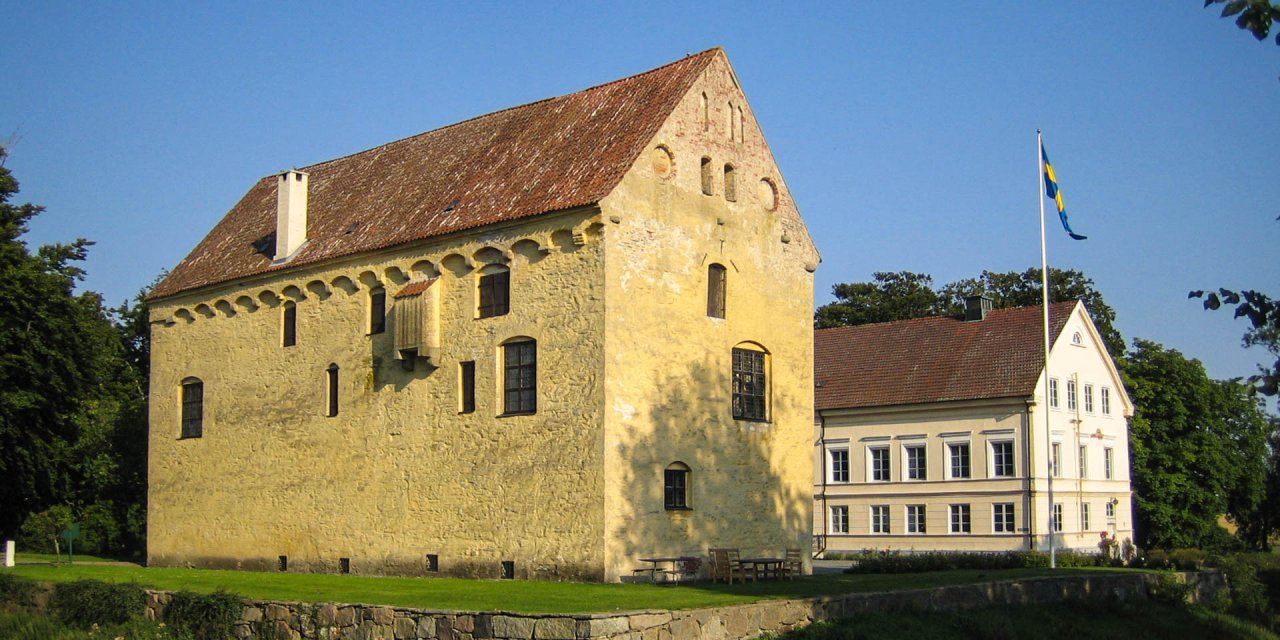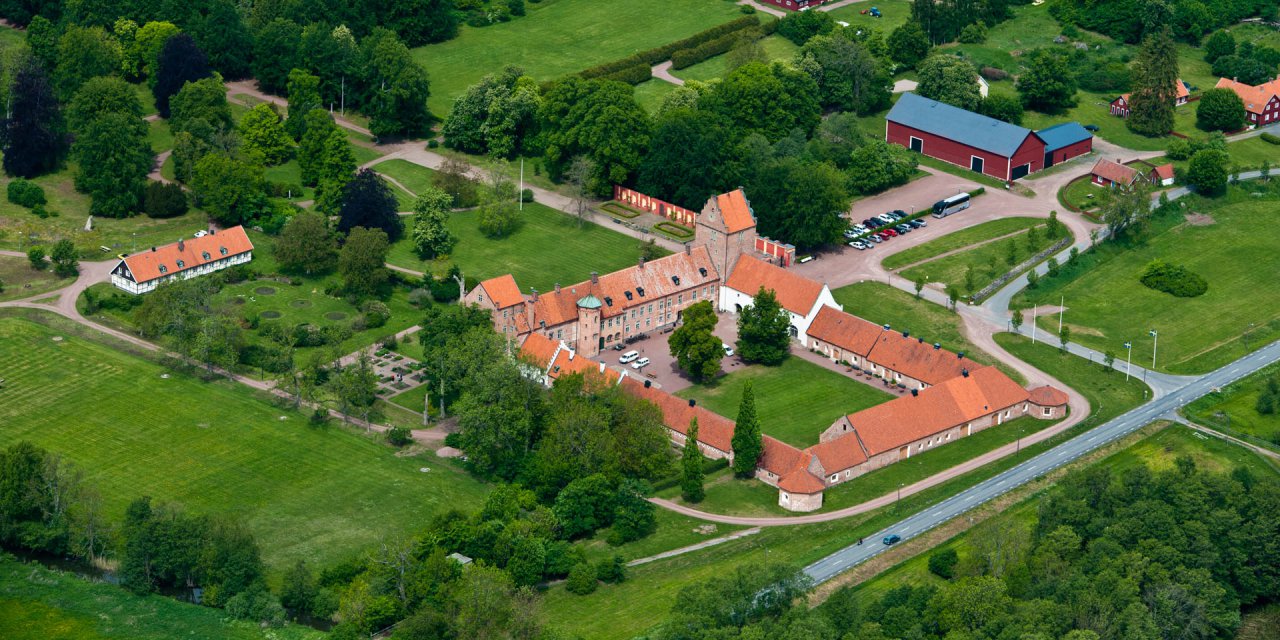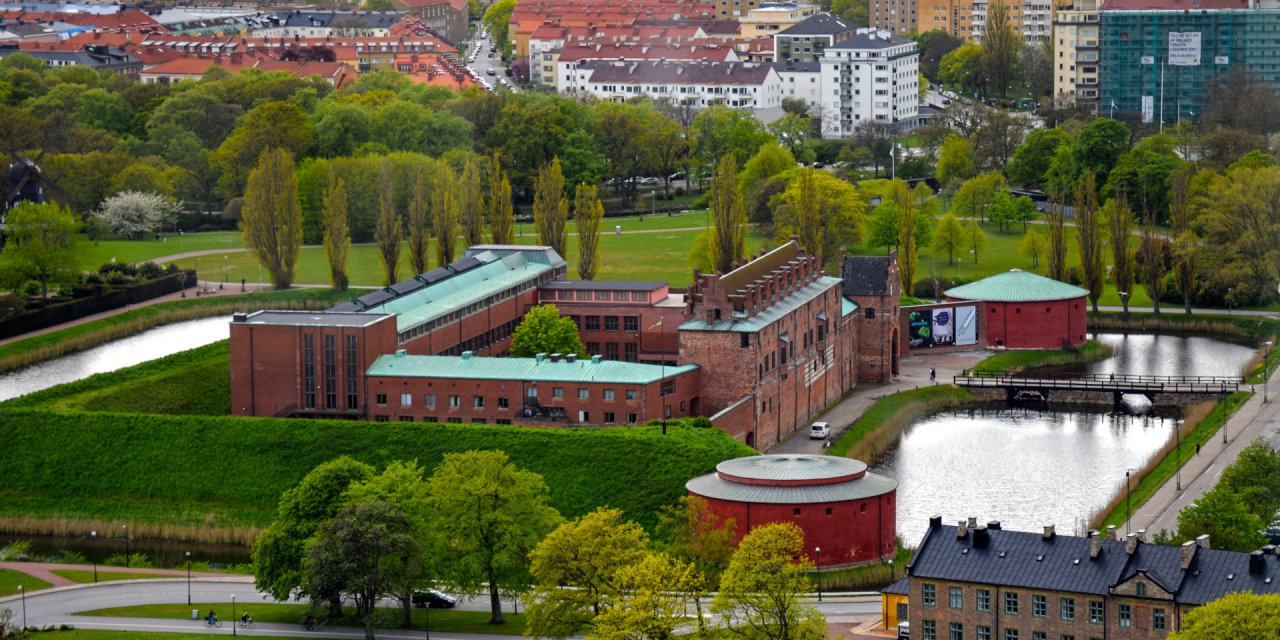

Glimmingehus
Medieval castle near Hammenhög
The castle Glimmingehus near Hammenhög in the southern part of Simrishamns Kommun is considered to be the best preserved medieval castle in Scandinavia and is also one of the oldest secular buildings in Sweden.
As the old inscription above the entrance reveals, the foundation stone for the construction of Glimmingehus was laid on May 2, 1499 at a time when the province of Skåne still belonged to Denmark. The builder was the Danish knight, councillor and admiral Jens Holgersen Ulfstand (1450 – 1523), who moved into Glimmingehus with his family after five years of construction.
Glimmingehus was not a real castle in the sense of a military fortress, but something that was called a solid stone house in its time. It was a residential castle, so to speak, where living comfort and luxury were the main priorities, but which was also well fortified with thick walls and moats, and had the appropriate armament and defences to be able to defend itself against attacks.
Glimmingehus has an impressive size for its time. The rectangular building with the small window openings is 30 metres long, 12 metres wide and has a height of 26 metres over its four floors, including the high attic with the distinctive stepped gables. The massive outer walls are up to 2.4 metres thick and consist of unworked sandstone and quartzite. The door and window frames are made of finely hewn Gothic limestone.
This and several other stonemasonry works inside the castle bear the signature of the master builder Adam van Düren, who was largely responsible for the construction of the castle. Born in Westphalia, he worked in Denmark and Sweden from 1487 to 1532 and was involved in several major building projects of his time. These included the restoration of the crypt in the Lund Cathedral, the completion of the chancel in the cathedral of Linköping and alterations to Borgeby Castle and the fortress Malmöhus.
The defences of Glimmingehus
The outer defence system of the castle consisted of a moat and a ring wall which surrounded the main building and outbuildings. The ingenious inner defence system of the castle begins with the entrance, because there is only one entrance and it is relatively narrow. At roof level above the entrance there is a large bay window with an opening in the floor through which stones or boiling liquids could be poured onto potential attackers.
In addition, a wooden balcony ran around the entire building at roof level, from which attackers could be taken under fire. Inside the castle there is only one staircase connecting the different floors. The stairs are deliberately kept very narrow to prevent the simultaneous use of shield and sword. At the same time, the individual stairs become higher and higher towards the top to increase the physical effort for a fully equipped attacker.
Removable stones in the steps made it possible to take an attacker on the stairs under fire from above. Embrasures in the walls of the staircase were intended to allow attacks from the rooms next to the stairs. In addition, the stairwell could be closed with a heavy stone slab on each floor. In addition, there was a system of narrow corridors, false entrances and false doors, which were intended to make life difficult for an intruder.
Glimmingehus as a residential house
Despite all the martial defences and death traps, Glimmingehus was a dwelling place that offered all the luxury available at the time. In addition to the large open fireplaces in the living rooms, there was also a hot-air system that was operated with the fire from the kitchen in the basement and carried the hot air up to the top floor of the house.
Due to the centuries of vacancy of the medieval luxury property, there are no more furnishings apart from the permanently installed stonemasonry. But during excavations on the site, Spanish ceramics, Venetian glass and pressed motif glass from the Rhineland were found, the most expensive objects that could be bought for money in the 16th century.
On the ground floor there was the kitchen, a bakery, a brewery, a storeroom, the wine cellar, a well and the central heating system for the warm air heating. On the first floor was the castle lord's apartment with a living room, bedroom and own toilet. On the second floor is a knights' hall with a large fireplace decorated with elaborate stonemasonry and the former living rooms for women and children are on the same floor.
The third floor was a defense floor where weapons and ammunition was stored. The floor has loopholes around it and from here was the access to the former gallery on the outer wall of the castle. In the high attic floor above it, supplies such as grain was stored.
Despite all luxury, Glimmingehus was inhabited by only a few generations. After that time, the massive walls stood empty. During the war in Skåne in 1676 it was feared that the castle could be occupied by Danish troops and King Charles XI ordered the demolition of the castle. Due to the extremely massive construction of the castle, the project was abandoned after two failed attempts. From the 18th century onwards, Glimmingehus was used as a granary. Since 1924 the castle has been in state ownership, has been restored and is administered by the Swedish National Heritage Authority.
In the outbuildings of the castle is a museum with interesting facts about the history of the castle and the excavations. The museum shop offers books about the region and its history, typical souvenirs, gifts, handicrafts and replicas of medieval finds.
Glimmingehus: Opening hours & admission
Opening hours
Monday – Sunday: 11:00 – 16:00
Monday – Sunday: 11:00 – 16:00
Saturday – Sunday: 11:00 – 16:00
Monday – Sunday: 11:00 – 16:00
Monday – Sunday: 10:00 – 16:00
Monday – Sunday: 10:00 – 18:00
Monday – Sunday: 10:00 – 16:00
Monday – Sunday: 11:00 – 16:00
Saturday – Sunday: 11:00 – 16:00
Monday – Sunday: 11:00 – 16:00
Monday – Sunday: 11:00 – 16:00
Admission
Last update: 11/2019 | Errors and omissions excepted.



